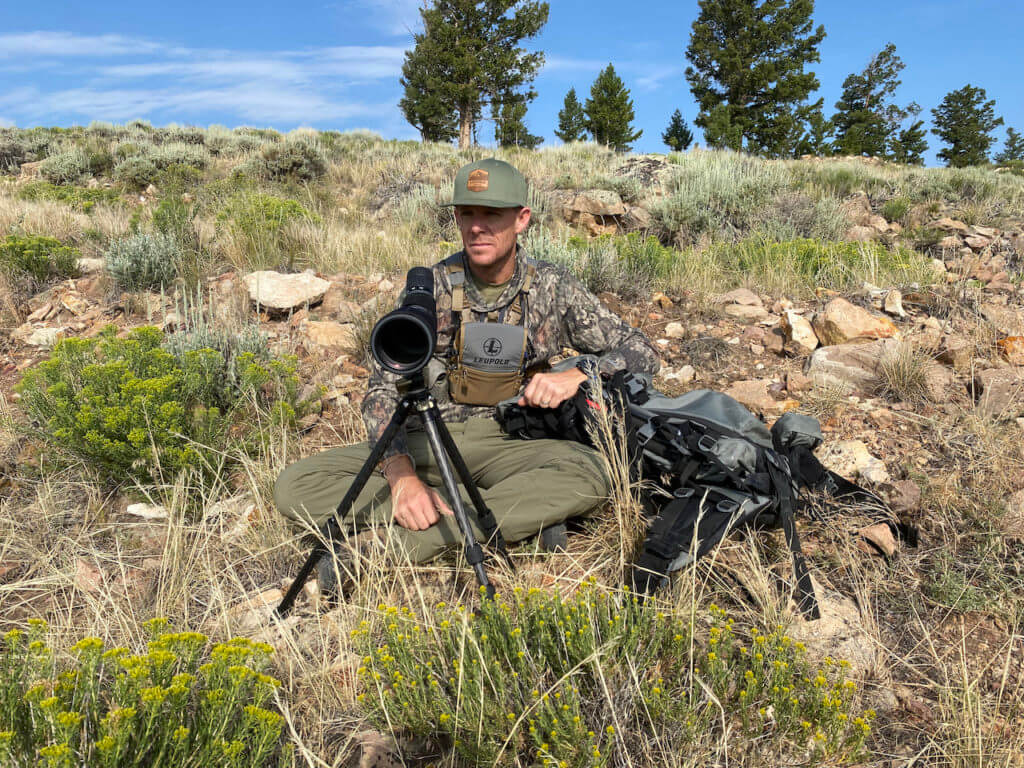
When it comes to hunting gear, there are certain items you can skimp on — look for a deal — take the low-end route. Optics aren’t one of these items. Few gear pieces will make or break your success, especially when hunting the west, like quality optics.
I get asked a lot about my optic system and how I use that system to find animals. So, here we go. To come is my optic breakdown and how I go about finding critters through quality glass.
Binos
I’m incredibly picky about the glass I hang around my neck, and you should be too. You will use your standard binoculars more than all your other glass combined. For this reason, I prefer a compact pair of 10x42s that promise clarity, durability, and excel during periods of low light. My go-to is Leupold’s BX-5 Santiam HD 10×42. I’ve used this pair of binos from eastern whitetail woods to the snow-capped Rockies.
A 10-power binocular is a great optic choice because the field of view is just for tight areas and provides enough magnification for open spaces. Leupold’s Santiam BX-5 heeds the hunting call. The bino’s open-bridge design makes them comfortable and a joy to tote, and I can’t say enough about the sizeable eye-box. I’m not too fond of a bino that has me squinting and doesn’t provide enough relief for extended glassing sessions. Eye-box adjustments, thanks to the gridded, rubberized pattern is a breeze, and you can set the twist-out eyecups at three different positions based on your needs. The focus wheel is smooth and so is the diopter.
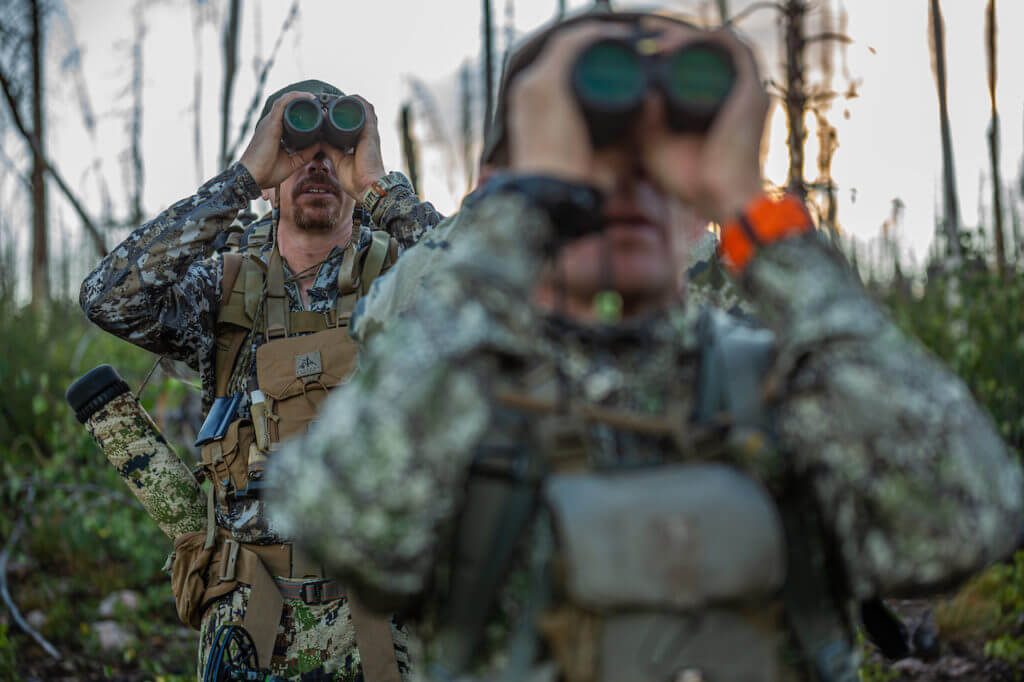
Super compact, the ergonomics of this bino is remarkable. They are lightweight, easy to handle, and I cheer the gridded, rubberized coating. Waterproof, the BX-5 is as durable as they come. On a recent Rocky Mountain adventure for bighorn sheep, I unhooked the binos from my harness to let a buddy try them. When he handed them back, I missed my pouch, and the binos hit a large. No issues. Chalk this up to the Armor Coated housing and Hydrophobic lens coating. Plus, the professional-grade optical system ensures perfect light transmission based on the landscape’s amount of natural light. The DiamondCoat 2, an icon-assist exterior lens coating, ensures maximum light transmission and boosts abrasion resistance.
While I’ve spied a pile of long-range critters with my 10x42s, I don’t use them often from a vantage point when glassing for elk, deer, sheep, or pronghorn. These binos are my carry set and are perfect use on the stalk, from treestands, and the like.
I start every vantage point glassing session with a pair of 15s. If I had one binocular option to use for the rest of my life, I would take a pair of 15x56mm every time. My 15-power go-to is Leupold’s BX-5 Santiam HD. Like the 10-power binos, the build on this larger-framed bino is genius, as is the overall clarity.
The trick, when looking over big, intimidating terrain, is to develop a system. After mounting my 15s to a tripod (more on this in a bit), I break each face, slope, bench, or whatever, into grids. Next, I scan from one set landmark on the first chosen grid, from right to left, until I hit my stop landmark. These two landmarks are never very far apart. Next, I go over the area again, slower this time, back from left to right. I start at the top of the area I’m glassing and work my way down. When glassing with a pair of 15s, you’re looking for ants and not elephants. You’ll find a lot more critters if you stop looking for the entire animal and focus on looking for an ear tip, antler, part of the body, and the like. When you’re looking for pieces, you dissect terrain more thoroughly.
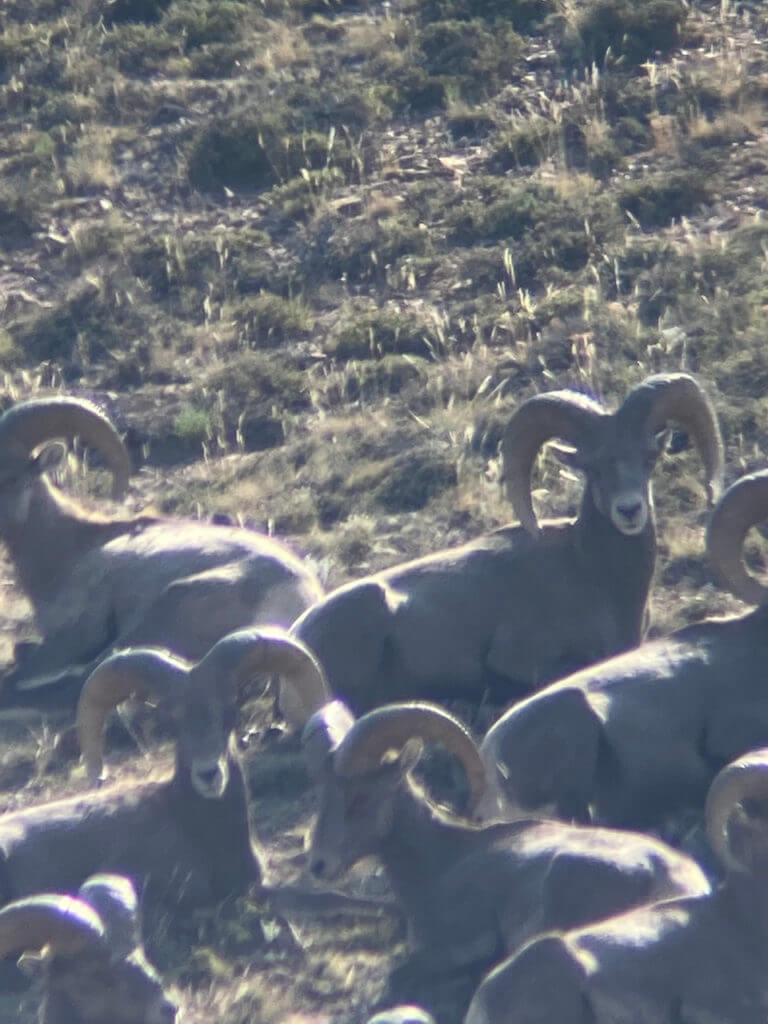
This may sound elementary, but you need to familiarize yourself with the anatomy of the animal you’re hunting. Be sure to take note of antler size, shape, and color. It’s also imperative to know general body size and color phases if the animal goes through any. The color of an August mule deer and one in late November are significantly different.
Leupold’s Santiam BX-5 HD 15×56 binos measure 8.2 inches long and weigh 45 ounces. These aren’t the binos you want around your neck and are not the best choice for off-hand glassing. On a tripod, however, they are money. The lenses are fully multicoated, and the high-definition, calcium-fluoride lenses promise clarity at all magnification levels. I used these optics on three separate bighorn sheep scouting missions and for the entirety of my hunt. If you’re not keen on a spotting scope or are simply wanting to add to your optic arsenal, this pair of 15-power binos will serve you well.
Tripod
Before we dive into picking the proper spotting scope and how to use that scope, I want to highlight the importance of a tripod.
Good glass gets all the credit for finding the game, but the tripod is the unsung hero. I used to skimp on tripods, which is a terrible idea. Not only did I break several, but the operation of the pan head was never smooth, and adjustments were minimal at best. Spend the money and get a quality, lightweight tripod.
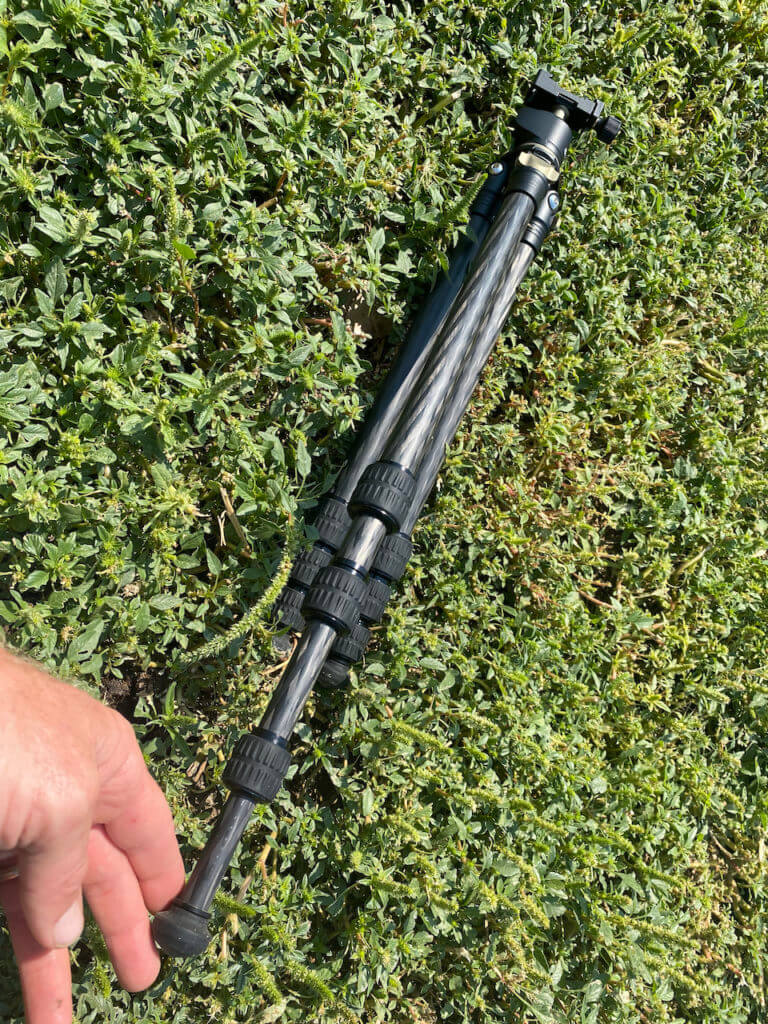
Be sure leg adjustments are smooth, easy, and lock in place. Next, take a deep dive into the tripod’s mounting system. The attachment of the adapter to the tripod must be secure, and once attached, optic movement should be ultra-smooth. You should be able to quickly and easily move your optic left, right, up, and down.
Once game is located, you need to have the ability to lock the optic down so it will not move. Several times, when using lesser tripods, I found game but inadvertently moved the tripod before I could lock it down. Sub-par tripods also have limited leg adjustments, which will cripple your ability to find game when glassing on uneven terrain.
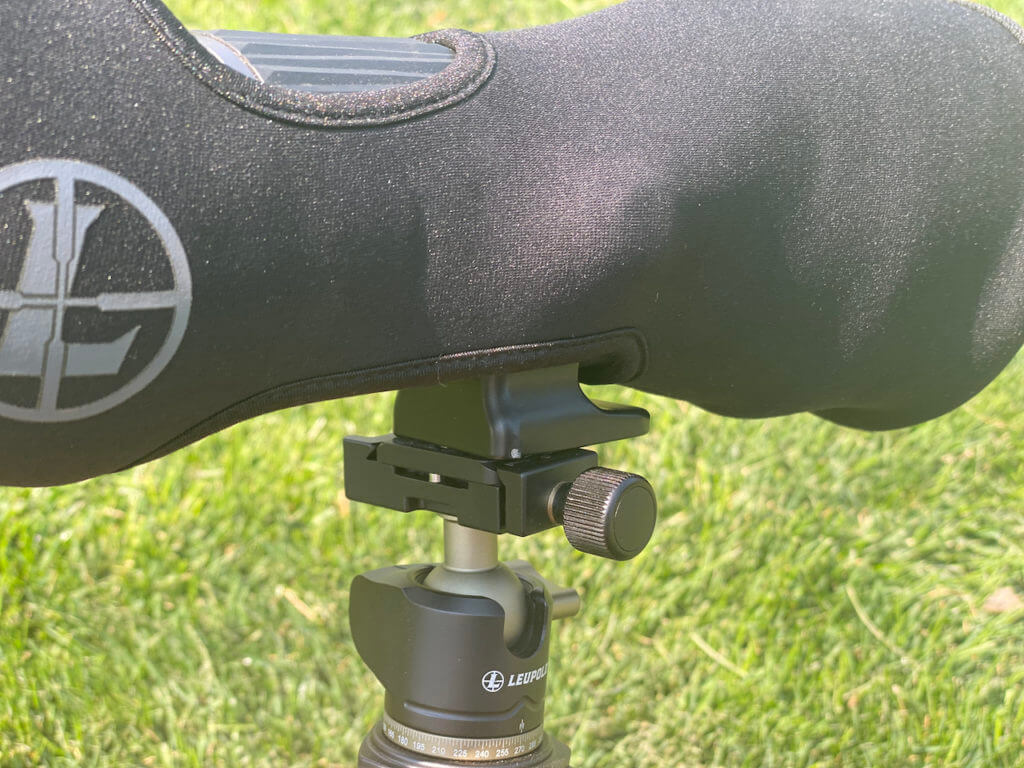
My shiny new favorite is Leupold’s Alpine Tripod Kit. The carbon-fiber build makes it German-tank tough, and it tips the scale at just 32 ounces. The carbon-fiber legs are twist-and-lock, which ups overall efficiency, and the three-angle pivot locks allow you to make quick height adjustments. This tripod quickly adjusts from 5 inches off the ground to a stand-up glassing position of 58 inches. I love this type of versatility. Another hat-tipper of the tripod is the single ball head, which makes left, right, up, and down movements precise and so very smooth. The tripod head uses a dovetail design and a smooth, easy-to-use twist-and-turn nob to suck tightly around the optic adaptor.
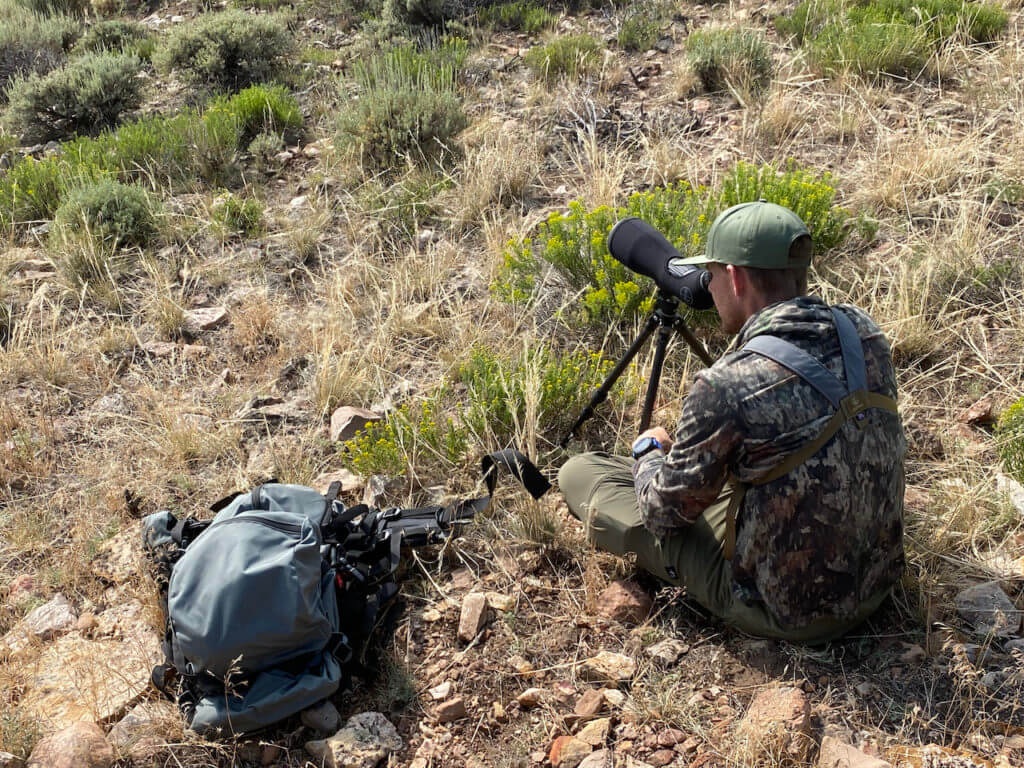
I realize dollar signs are flashing in your brain at this point. Please know it takes time and some budgeting to complete the optic system equation. Once you do, however, you’ll wonder how you ever got along without it.
Spotting Scope
Some hunters will tell you that you don’t need a spotting scope if you have a pair of 15s. I agree, to a point. I like magnification, and I can tell you there is a significant difference in the magnification between the BX-5 Santiam HD 15s and Leupold’s SX-5 Santiam HD 27-55x80mm spotting scope.
On my once-in-a-lifetime ram hunt, I was looking for a once-in-a-lifetime animal. Every year, throngs of hunters across the country draw premium, limited tags. When you do, you want to evaluate every animal’s headgear carefully, and a quality spotting scope mounted to a top-end tripod allows you to do so.
If you’re hunting an area that allows you to drive or take a short walk to a glassing point, use your 15s to find the game, and then switch to your spotting scope to evaluate the animal. A spotter will also come in handy when your 15s find a distant object you believe is an animal but want to confirm it before burning a bunch of energy and boot leather. I also love being able to attach a PhoneSkope to my spotter and watch animals on my phone screen. A PhoneSkope also allows you to take and share photos and videos.
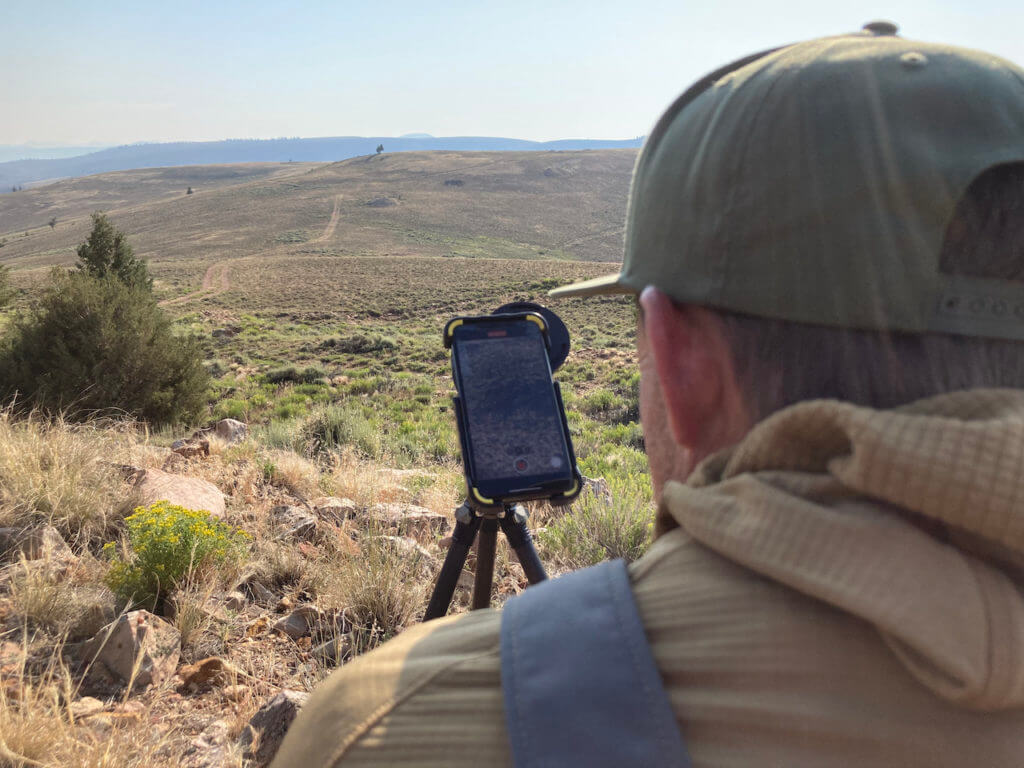
Like my Leupold bino combo, this spotter delivers clarity, good light gathering, and durability in spades. The 27-55 magnification range married with the spotter’s 68.7-ounce weight rating is ideal, and the angled, rotatable eyepiece ensures multiple viewing options and the comfort you need to spend all day in the backcountry peering through the multi-coated lens. Another must-note item about this spotter is the phase-coated roof prisms boost resolution to provide an ultra-sharp sight picture.
If you develop an optical system, learn how to use that system, and stay patient and trust your glass, you’ll find game you’d otherwise miss.


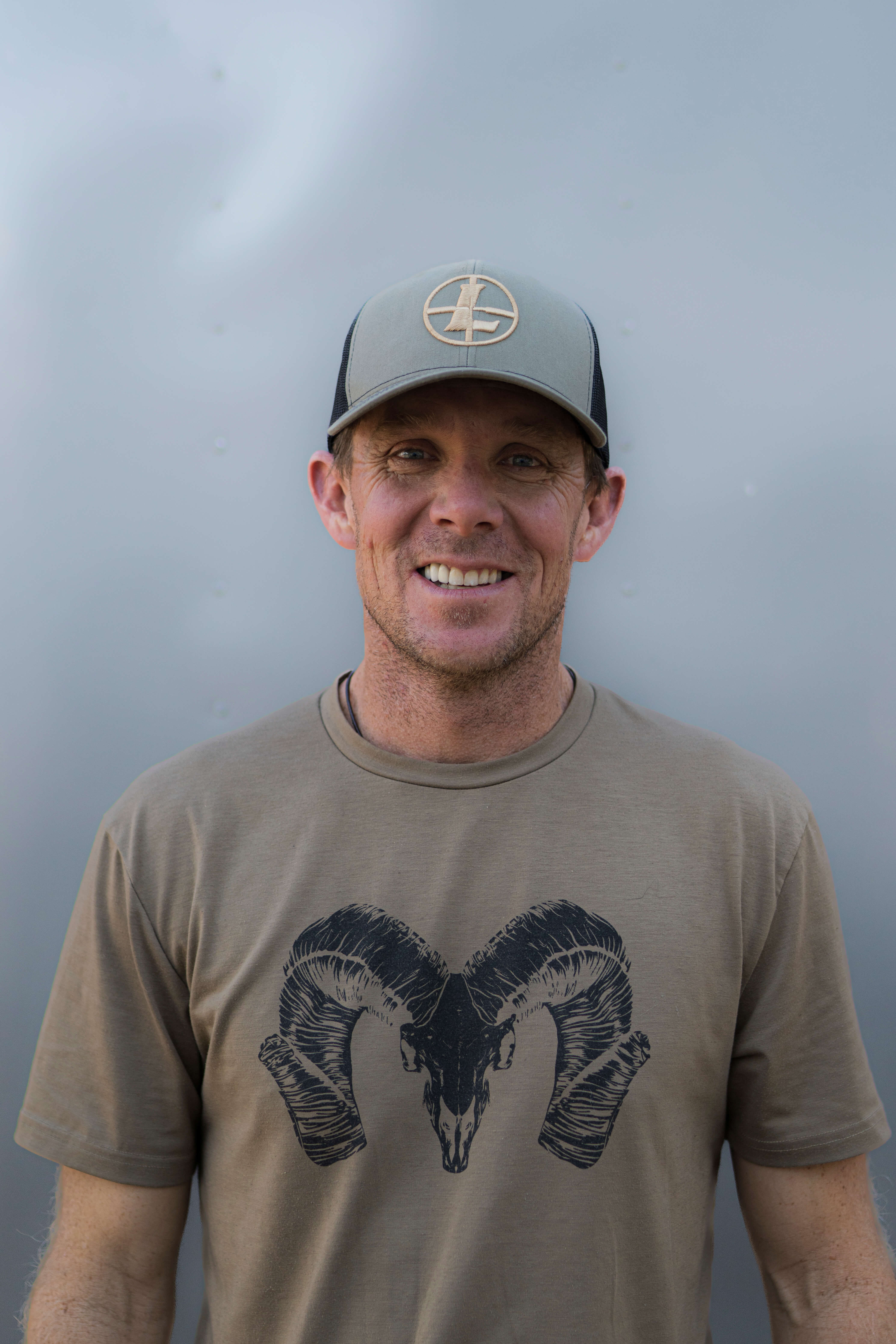
Wow, this HAD to be a paid endorsement for Leupold! I have nothing against Leupold, they make very good midrange glass and I own several of their rifle scopes, but there are a number of other similar quality and priced optics available. HOWEVER when it comes to absolute crystal clarity and light gathering ability that gives one the edge in difficult shooting light conditions nothing compares to Swarovski, Zeiss and Leica. Yes, they are expensive, but when you consider what you pay for a quality trophy hunt, the difference between merely good and the best is minor and could be the difference between bringing home a trophy or coming home empty handed!